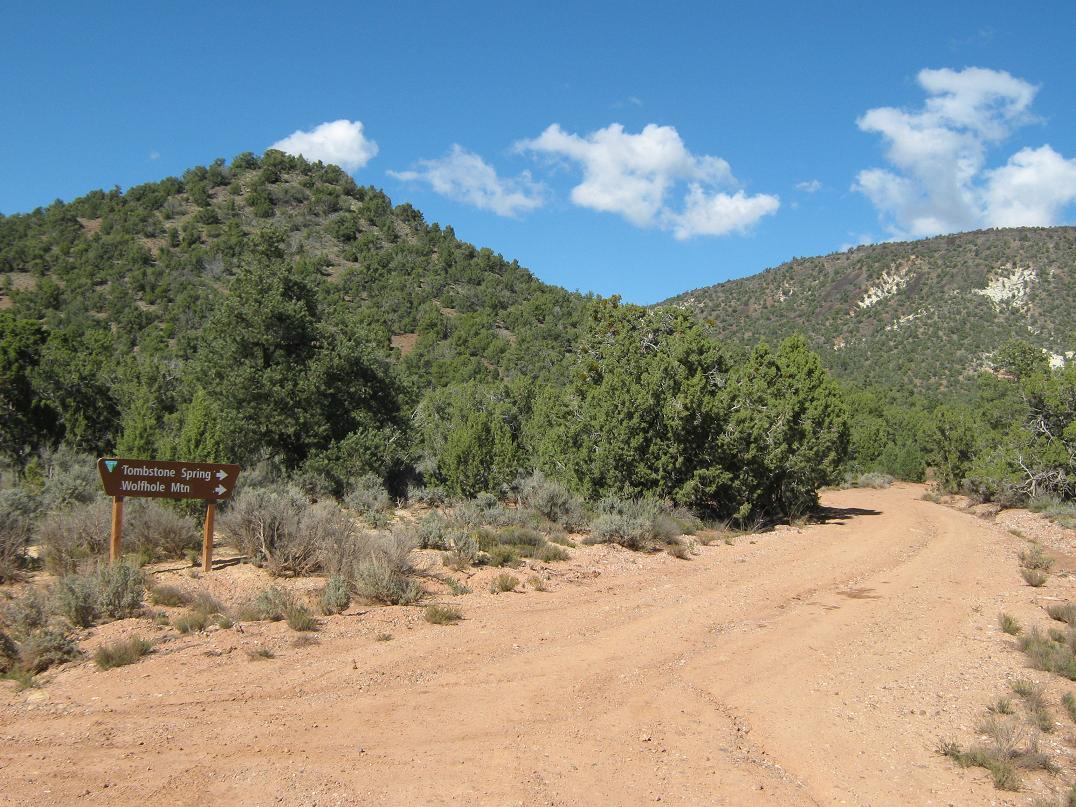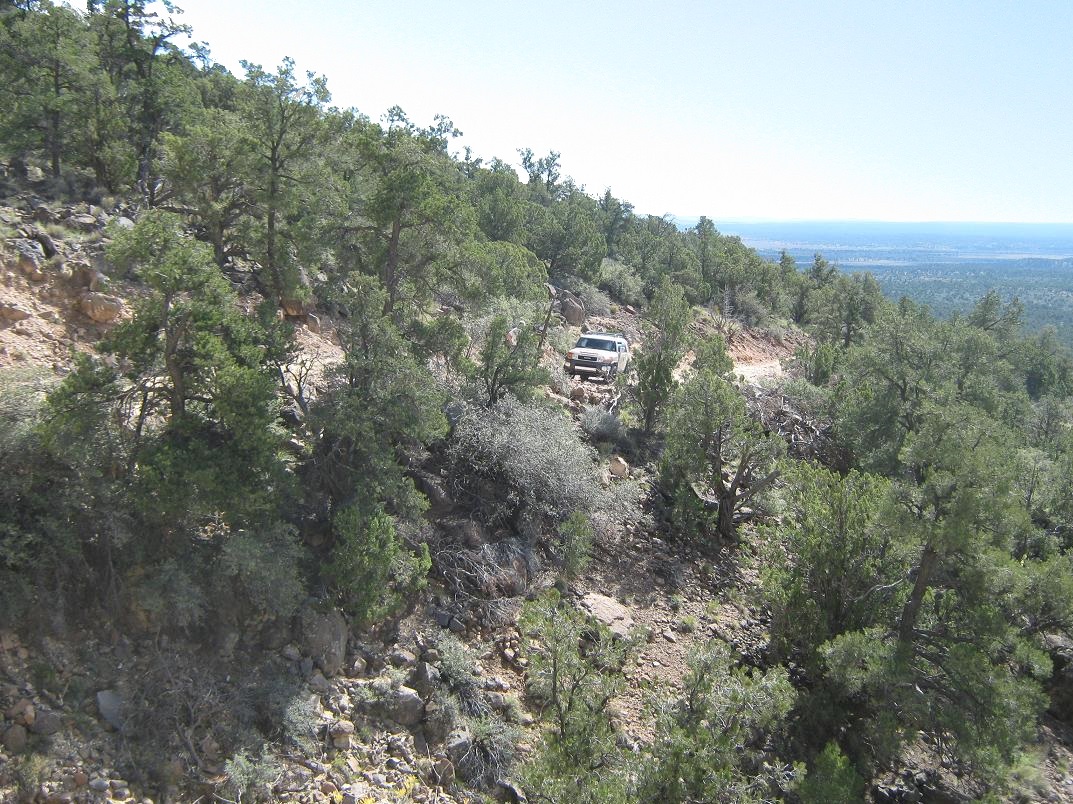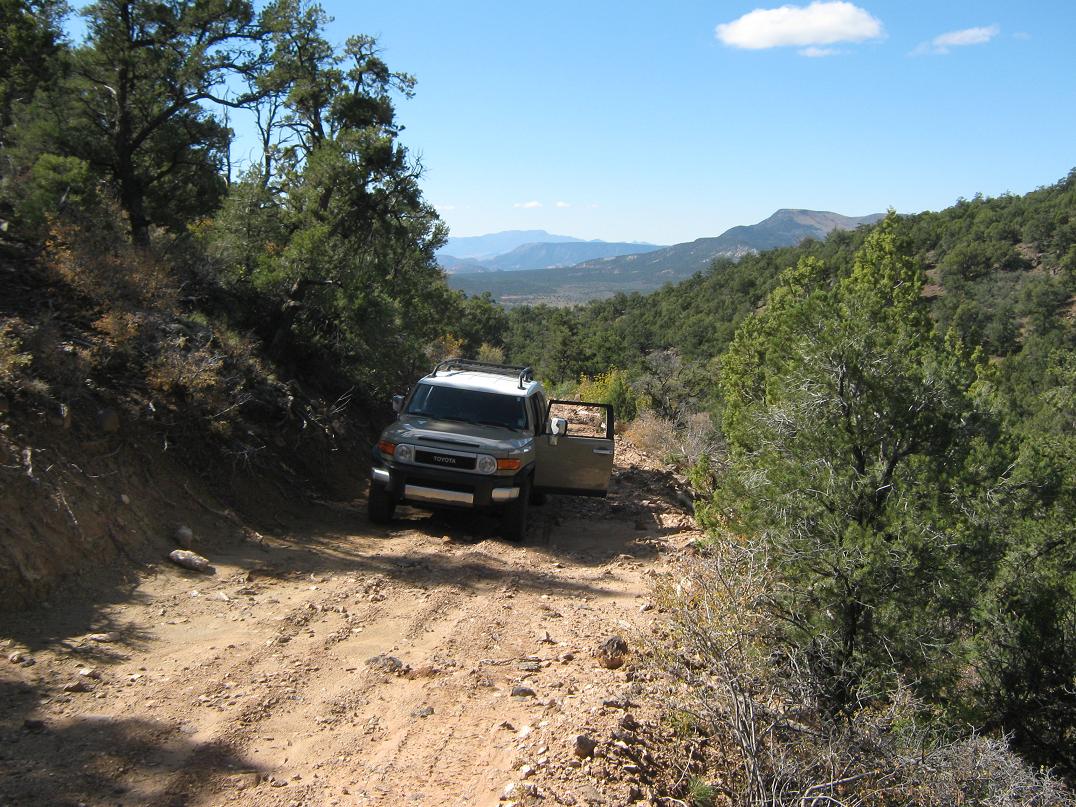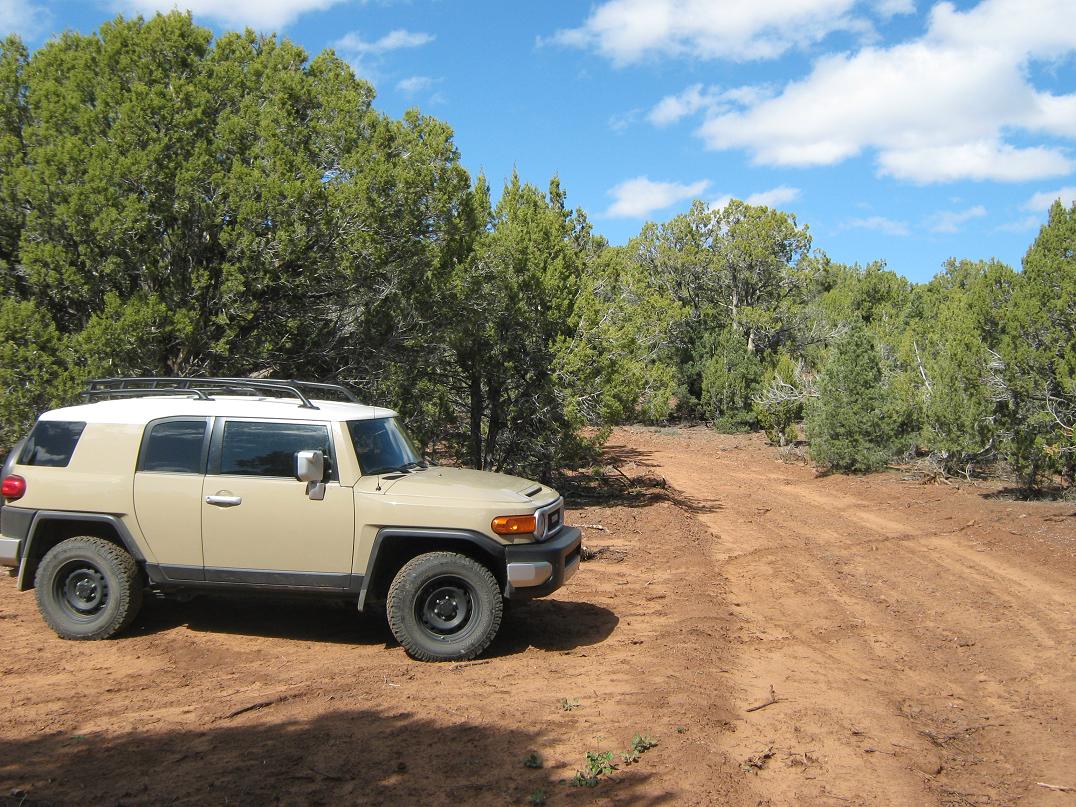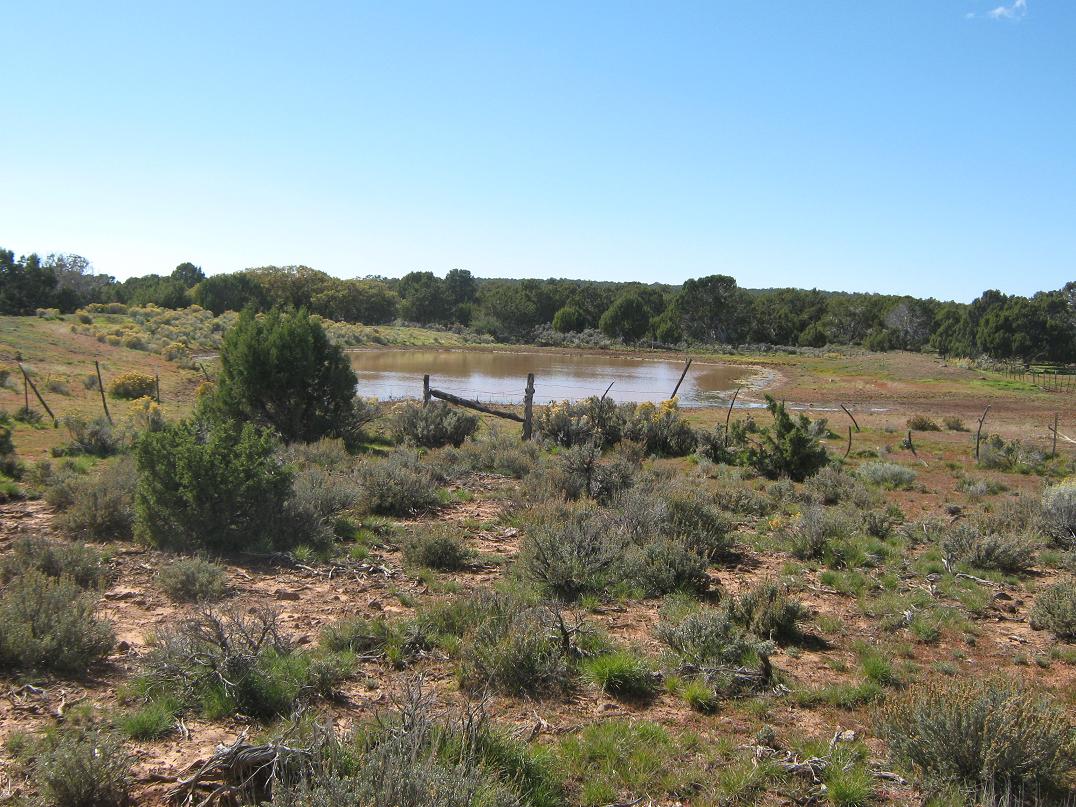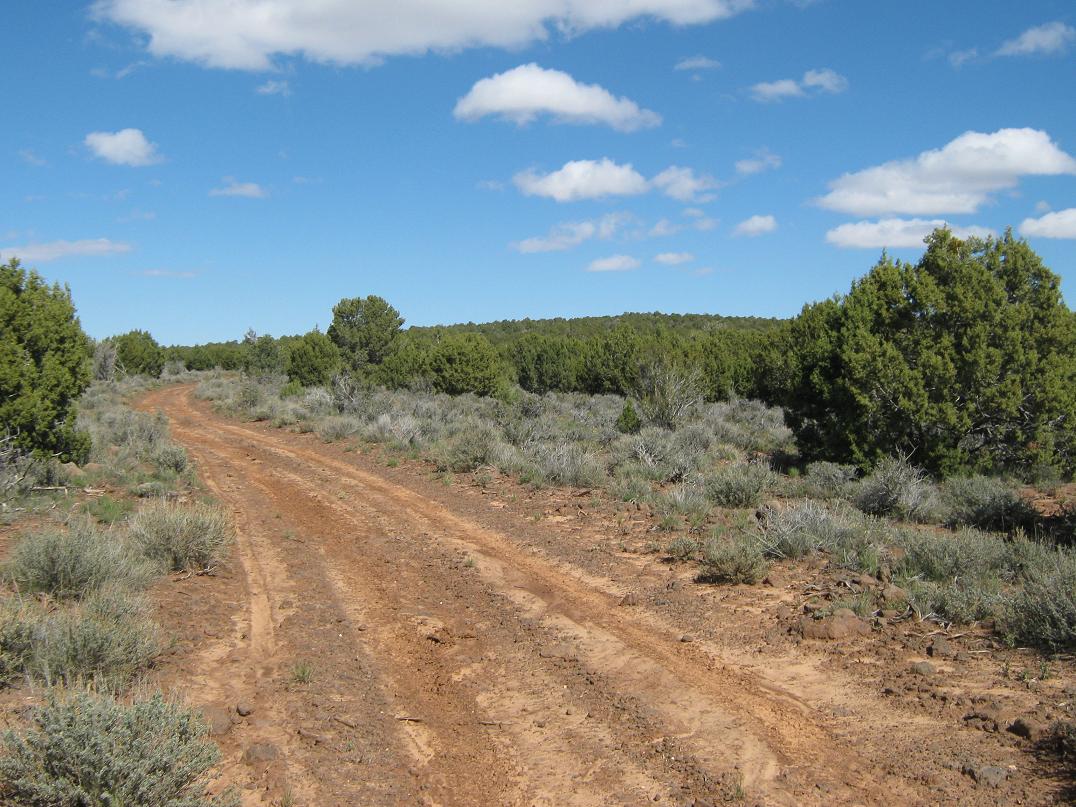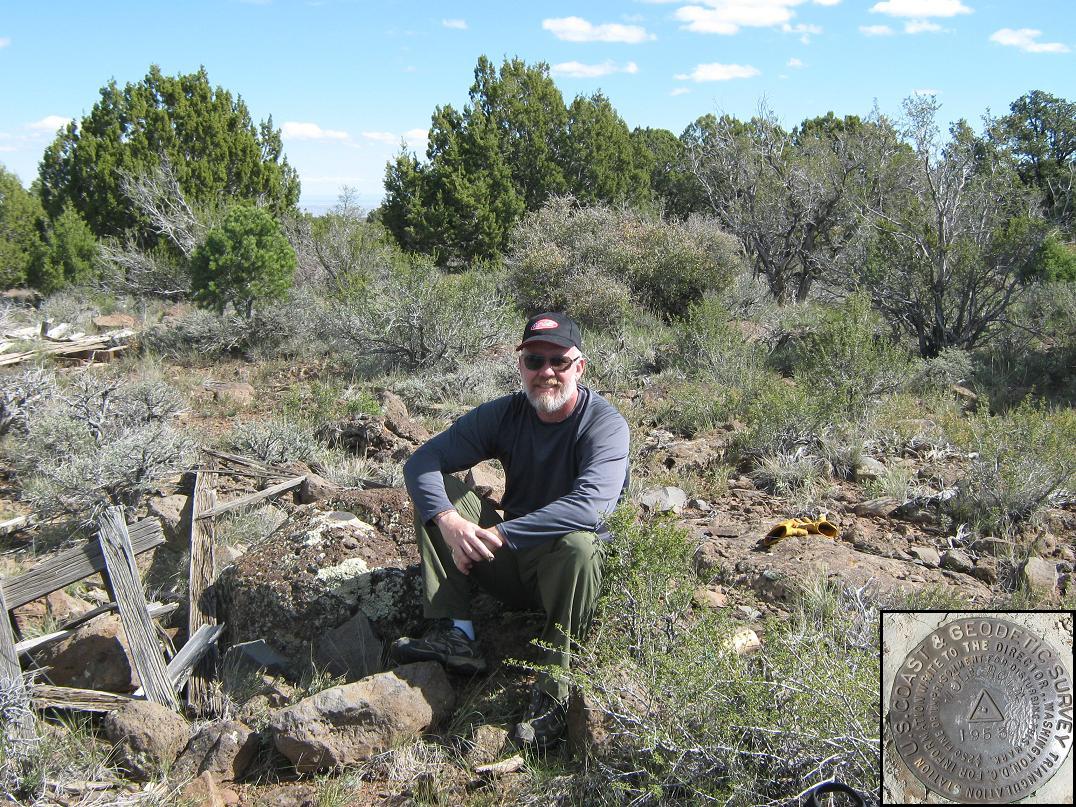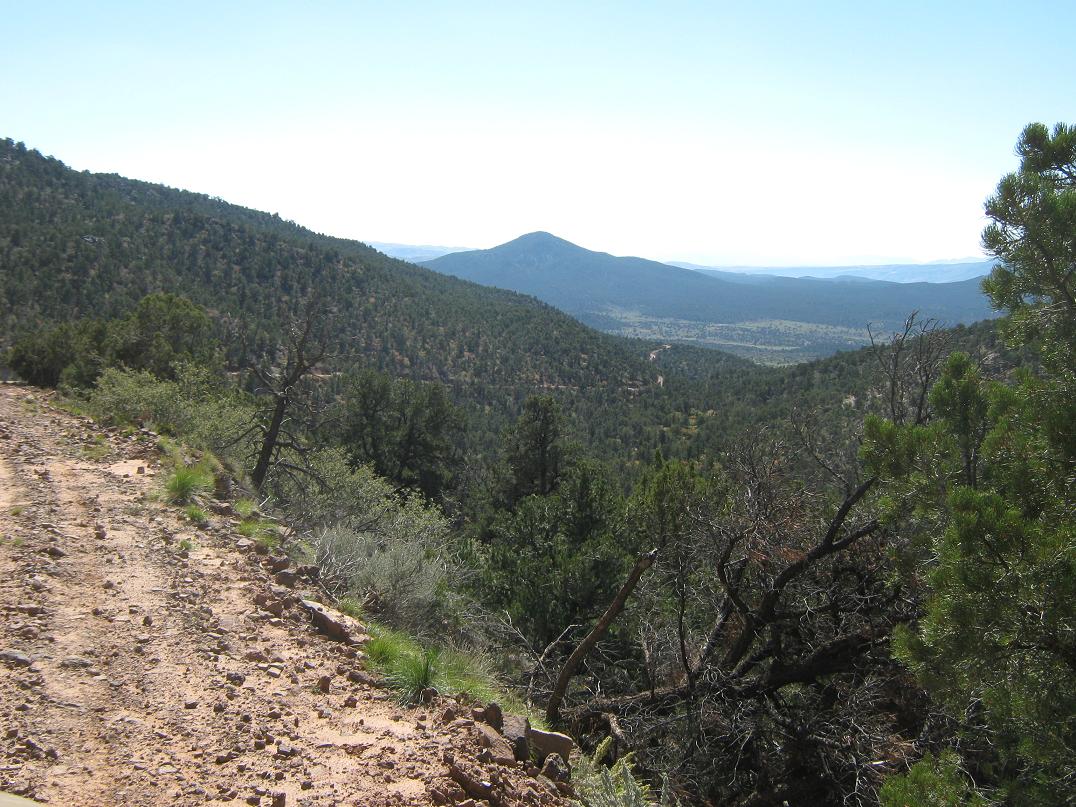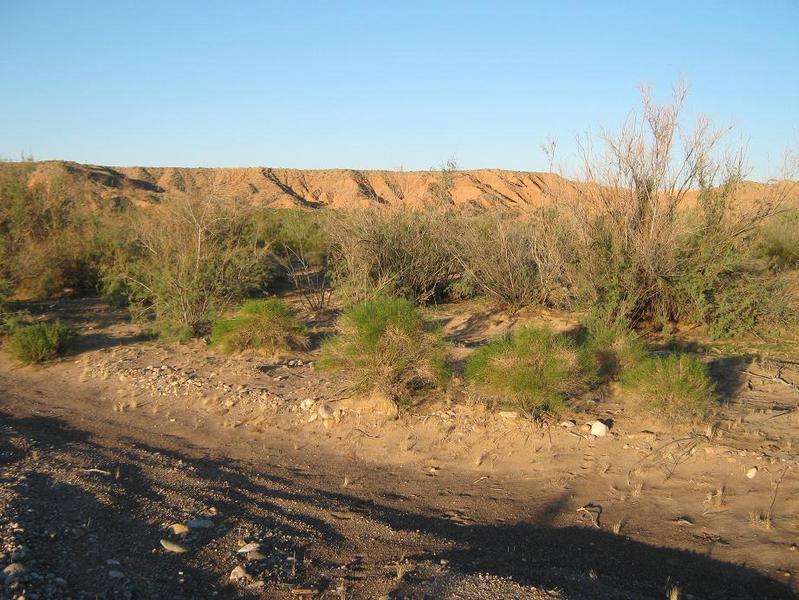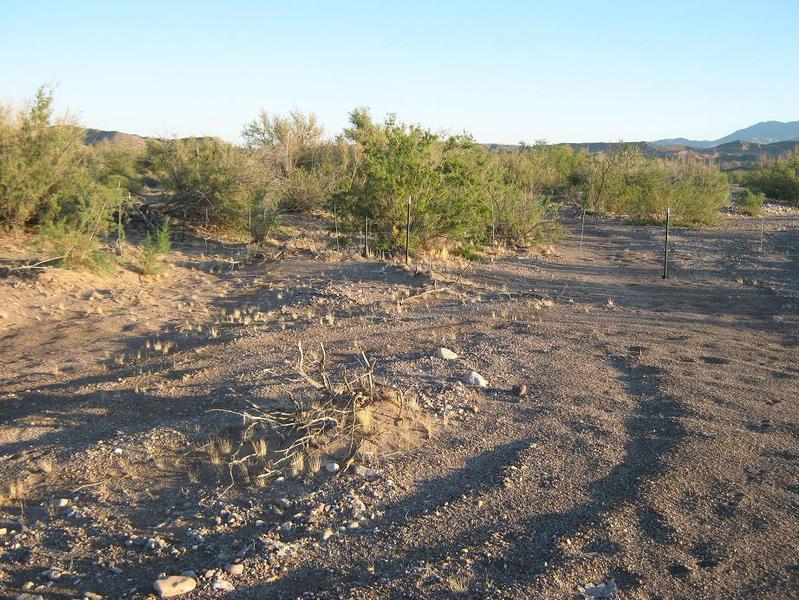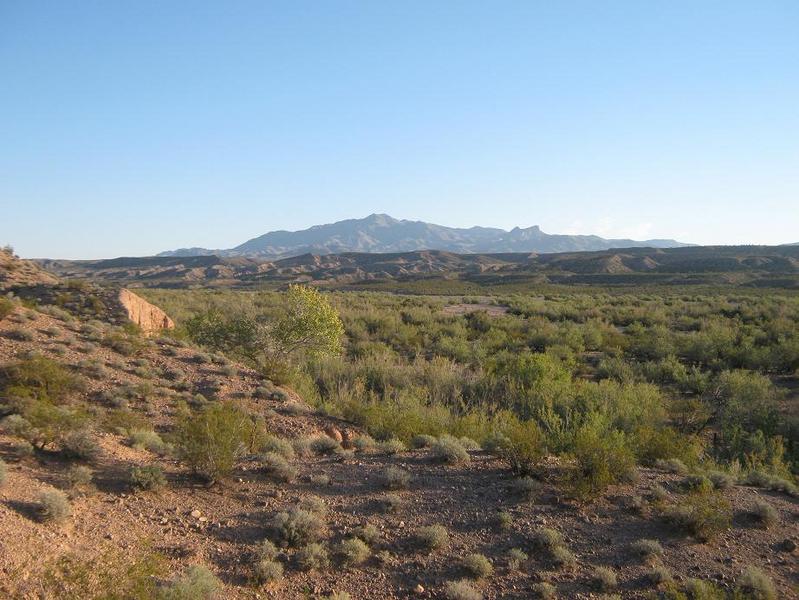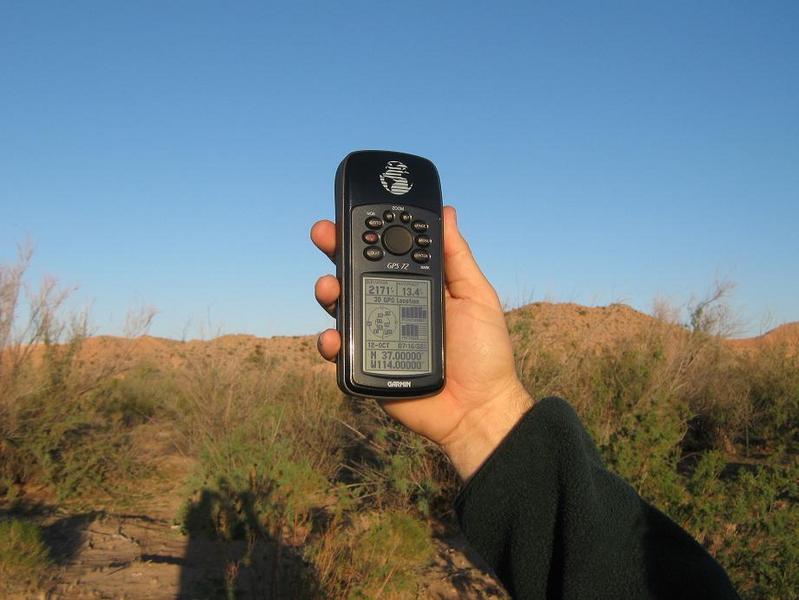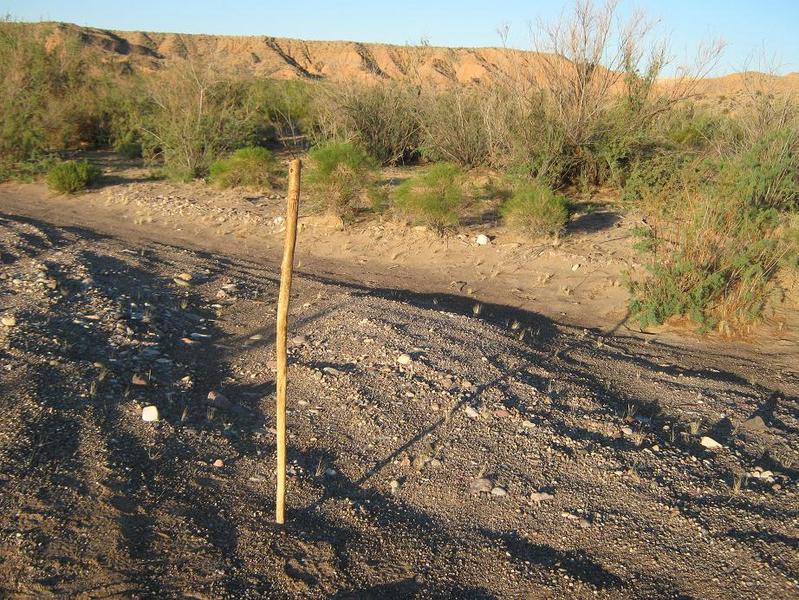
The Mountains of Arizona
• www.surgent.net
|
| Wolf Hole Mountain |
• Shivwits Plateau • Arizona Strip • Mohave County |
|
Date: October 12, 2013
• Elevation: 6,416 feet
• Prominence: 1,276 feet
• Distance: 3 miles
• Time: 3 hours (including the drive)
• Gain: 240 feet
• Conditions: Clear and warm
• Teammates: Scott Casterlin
Wolf Hole Mountain is a sprawling plateau on the Arizona Strip, about 30 miles south of St. George, Utah. Scott Casterlin and I planned a couple days of driving and hiking peaks up on this far-away place, with Mounts Dellenbaugh and Logan as the primary objectives. I saw that Wolf Hole Mountain was along the main road, and that it looked logistically simple, so it looked like a place worth checking out.
We started the day at our bush-camp in a side wash near the Beaver Dam Wash, near where Arizona, Utah and Nevada come together. Scott had driven us up yesterday, a 400-mile drive to this location, arriving in the dark. We were able to drive to our bush camp with no difficulties, a half-moon and clear skies giving us plenty of light to navigate by. We both slept in the open, under the stars.
The purpose of this location was two-fold: it is where the North 37, West 114 latitude-longitude confluence is located, and it is near the lowest point of Utah. The details of that hike, plus some images, are below. After done with that, we drove into St. George for last-minute supplies and gas before heading south into Arizona and the famed Arizona Strip.
The Arizona Strip is the northwest corner of the state, all lands north of the Grand Canyon and south of Utah. Just three actual towns survive up here, Littlefield along Interstate-15, and Fredonia and Colorado City, both abutting the Utah state line. The rest of this vast territory is undeveloped high sage desert, juniper and pinon woodlands, and huge tracts of ponderosa pine forest. Most of it is BLM land, much of it protected as wilderness or within the Grand Canyon-Parashant National Monument or the Grand Canyon National Park. There is no infrastructure once off the paved highways. Although the main roads are smooth hardpack, we still had enough provisions for a week, plus enough gas for the nearly 250 miles of dirt roads we'd be driving over the next few days. Driving onto the Arizona Strip is like driving back in time.
In 2005, Beth and I visited Toroweap Overlook and hiked Mount Trumbull, starting our journey in Fredonia. We then worked our way west through the Hurricane Cliffs to the locale of Mount Trumbull the ghost town, then north into St. George. For this trip, Scott and I would start in St. George. Driving along the Southern Parkway, we exited at River Road, and immediately crossed the state line into Arizona, the road now called BLM-1069. We passed some other plateaus such as Mokaac and Seegmiller Mountains, and worked our way up a steep grade onto the actual Shivwits Plateau, the main western plateau of the Strip. We were at the base of Wolf Hole Mountain, but we opted to drive another few miles to a junction with Road BLM-1004, a 20-mile journey thus far and the location of Wolf Hole, the alleged ghost town.
(According to the pamphlet provided by the BLM, the intersection of Roads 1069 and 1004 occurs 18.8 miles south of the state line. The mileages given on the signs mention St. George being farther, but I think these are reckoned from the BLM offices in St. George, not the state line.)
We parked at this junction and took a lunch break. We also surveyed the area for any remnants of the ghost town, but all we saw was one old roof lying on the ground, and more modern fencing. Supposedly the town was big enough to warrant a post office back around 1920. It was presumably a ranching supply town and possibly a town supporting the flow of timber that went north to build out St. George in its early days.
After about 30 minutes, we drove west on BLM-1004 about six miles to the signed turn-off for Tombstone Spring and Wolf Hole Mountain, this road marked as BLM-1037. Scott had no strong desire to hike this particular peak, but was game enough to explore the rough dirt road cut into the slopes, a chance to test his Toyota FJ. If he could get in a mile or two, he'd hang back at the vehicle while I ran off for the top.
Within a few feet, the new road's condition dropped a notch and he put his vehicle into 4-wheel drive. We passed by the Tombstone Spring spur road, angled left and shortly came upon a large rock lying in the road, much too large to move aside. We studied the road, how much room he had, whether it was worth it to try to drive past it. We decided the road looked good, so we spent some time clearing smaller rocks and tree branches. I stayed outside the vehicle and spotted him past the large rock and past a section with hefty erosion.
We then drove about another mile, but the road was narrow with no opportunities to stop and turn around. But the road was never too rotten, so we kept moving forward and upward, stopping often to get out and clear rocks from the road. This was fast becoming a "hike by truck" journey and a tiring one too, given the amount of free road maintenance we were performing for the state.
Scott was able to bash and grind his FJ higher and onto a flat bench of juniper, with a pull-out that would allow us to turn the vehicle around easily. We were just a little over a mile from the top and only 300 feet lower, so Scott decided that since he'd put in all this effort, he'd go tag the top with me, too. We hiked up the road, gaining about 100 feet in one quick stretch, then emerging onto the plateau-top. We passed a couple of bends and dips in the road, and soon we could see the low hump that held the benchmark and highest point.
We left the road and walked through pinon and juniper woodland toward the top, arriving in about 40 minutes after leaving the car. As expected, this hump was very broad and ill-defined, so we spent some more time walking its breadth and inspecting anything that looked high. We found the benchmark amid some old timbers strewn about. A very old wood-planked palette looked like the floor for a tent structure, but why one would be here at all is a mystery to us. We both felt the highest rocks were nearby, behind some trees. We spent some time resting and taking in the views, which were quite nice. We could see the Virgin Mountains and the big peaks surrounding St. George, plus a multitude of other plateaus in all directions.
We descended back to Scott's vehicle and then made the slow drive down, Scott using 4-wheel low to inch down the marginal road. We stopped near the spring and he went to inspect it, then we were back onto better roads and on our way south toward tomorrow's objective, Mount Dellenbaugh. Although it was only about 1 p.m., we still had a lot of driving to our camp, so we took our time and got there about 4, time to set up camp and enjoy the quiet and solitude.
I was half-expecting to not have success on Wolf Hole Mountain. I wanted to inspect the roads for a future hike when next in the area. But Scott was willing to test the road with his vehicle and everything worked in our favor, and I was happy to get this under-rated peak in the books.
We hiked to the confluence early this morning before heading south onto the Strip, a three-mile round-trip hike along the Beaver Wash channel. We both walked a few more feet north to a fence-line, the actual Arizona-Utah boundary. Sticking my foot under the fence, I was somewhere near the Utah state lowpoint, but I did not have the desire to step in every little braided wash bottom "to be sure". We also considered a hike out to the NV-AZ-UT tricorner monument, but it was nearly 3 miles one-way through a mazework of badlands and bluffs, and we had no map for it, so we bailed and returned to Scott's vehicle.
|
|
